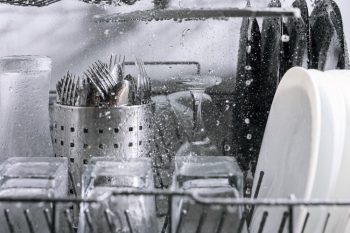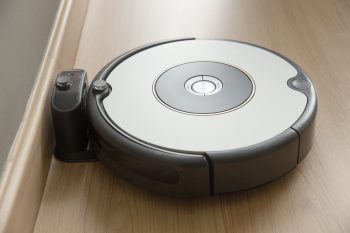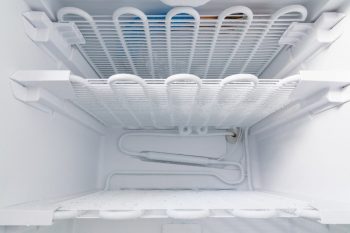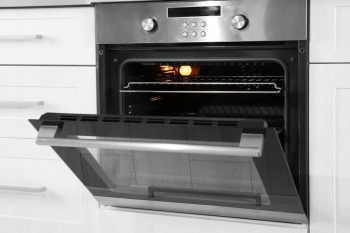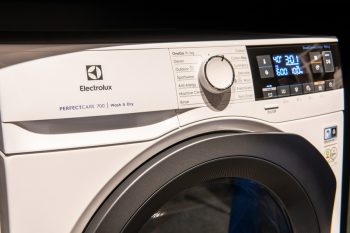
Garbage disposals have become a staple in many kitchens due to their convenience and efficiency in managing food waste. However, despite their widespread use, there is a common misconception about their internal mechanism, particularly regarding the so-called “blades.” The question often arises: what do garbage disposal blades look like? If you’re expecting to see sharp, blender-like blades, you’re in for a surprise.
Garbage disposals do not have traditional blades like those found in blenders or food processors. Instead, they use impellers or lugs mounted on a spinning plate and a stationary grind ring to break down food waste. These impellers use centrifugal force to continuously force food waste particles against the grind ring, which then breaks down the food into very fine particles.
The Truth about Garbage Disposal “Blades”
Contrary to popular belief, garbage disposals do not have traditional blades like those found in blenders or food processors. Instead, they rely on a different mechanism to break down food waste. The basic design and structure of a garbage disposal involve a grinding chamber, impellers or lugs, and a stationary grind ring.
Inside the grinding chamber, food waste is broken down by impellers or lugs mounted on a spinning plate. These impellers use centrifugal force to continuously force food waste particles against the stationary grind ring. The grind ring then breaks down the food waste into very fine particles, virtually liquefying them. After the particles are ground, running water flushes them through the grind ring and out of the disposer, eventually reaching the wastewater pipe.
Garbage Disposal Materials
The materials commonly used for manufacturing garbage disposals are aluminum and stainless steel. Aluminum disposals are less expensive but are prone to corrosion, denting, and are generally noisier than stainless steel units. On the other hand, stainless steel disposals are more durable, resistant to rust and corrosion, and less likely to dent. They also tend to be more expensive than aluminum disposals. The choice of material depends on factors such as budget, durability, and noise preferences.
Continuous Feed vs. Batch Feed Disposals
The blades of continuous feed and batch feed garbage disposals do not differ significantly in terms of their design or function. Both types of disposals use impellers or lugs mounted on a spinning plate to create centrifugal force, which continuously forces food waste particles against a stationary grind ring. The grind ring then breaks down the food waste into very fine particles, virtually liquefying them.
The main difference between continuous feed and batch feed garbage disposals lies in their operation and safety features. Continuous feed disposals are always “on” and can be activated by a switch or button, allowing them to grind up food scraps quickly and easily. Batch feed garbage disposals, on the other hand, are activated by a cover that must be in place before the disposal can operate.
Lifespan of Garbage Disposal Blades
The typical lifespan of garbage disposal blades is around 10 to 15 years. However, various factors can influence the longevity of the blades and the overall garbage disposal unit. These factors include the quality of the unit, frequency of use, type of waste, proper maintenance, and usage habits.
When to Replace Garbage Disposal Blades
To determine when it’s time to replace the blades of your garbage disposal, look for the following signs: strange or unusual noises, frequent clogs, slow drainage, lag time, and poor performance. If you notice any of these signs, it might be time to replace the blades of your garbage disposal.
Safety Measures
When inspecting or replacing garbage disposal blades, it is crucial to prioritize safety. Always disconnect power, avoid using your hands, wear protective gear, follow manufacturer’s instructions, and seek professional help if needed.
In conclusion, garbage disposals do not have traditional blades. Instead, they use a grinding mechanism involving impellers and a grind ring to break down food waste. Understanding this mechanism can help you maintain your garbage disposal unit effectively and extend its lifespan.
Frequently Asked Questions
How can I properly maintain my garbage disposal?
Regular maintenance of your garbage disposal includes running it regularly to avoid rust and corrosion, using cold water (hot water can melt fats that might clog the mechanism), avoiding hard materials like bones or fruit pits, and cleaning it with a mixture of vinegar and baking soda to remove odors and buildup.
Can I sharpen garbage disposal blades?
Technically, garbage disposals don’t have blades to be sharpened. The grinding action of the impellers against the grind ring effectively “sharpens” itself. However, if you notice a decrease in performance, you may need to replace the unit or have it serviced by a professional.
What should I avoid putting in the garbage disposal?
Avoid non-food items and hard materials like bones, fruit pits, and glass. Also, avoid fibrous materials like celery, onion skins, and corn husks as they can wrap around the impellers. Grease, oil, and fats should also be avoided as they can solidify and clog the system.
Is it necessary to run water when using the garbage disposal?
Yes, it’s crucial to run cold water when using the garbage disposal and for a few seconds after you turn it off. The water helps flush the food particles down the drain after they have been ground up.
Why does my garbage disposal smell bad?
Foul odors from your garbage disposal are typically due to food debris build-up. Regular cleaning using baking soda and vinegar or citrus peels can help eliminate these odors.

